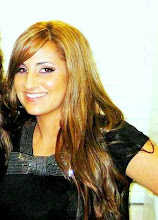Hofer , M., & Harr, J. (2009, October). Learning Connections: Tech Integration in Social Studies. Retrieved October 1, 2009, from ISTE.
What was addressed in this article is something I have thought about a lot, and I was excited to read about a way to solve the issue or incorporating technology into lesson plans. Since I want to be a math teacher, I have been trying to think of how I would be able to use technology in my classroom. There were specific ways in the article on how to incorporate knowledge based activities into using technology online, plus divergent and convergent activities. Bray used an example of taking a virtual field trip online for his students. I took a virtual field trip in a college Earth Science course, and I thought it was very effective and I learned a great amount!
1. What type of activities could be used in divergent-knowledge activities?
There are many different types of activities for this type of learning! Creating diaries, drawing cartoons, developing a knowledge web, designing an exhibit, or engaging in a historical role play are just a few ways to show divergent-knowledge activities in a technological manner.
2. What has research demonstrated about teachers and their lesson planning?
Teachers are found to plan their lessons around content based learning and activities centered on that. Teachers try to accommodate lesson plans to fit their students learning styles, because not every student learns in the same way. Pedagogy is another thing teachers try to think of when creating lesson plans for their students.
In this post, using the ISTE website I read an article called "Learning Connections: Tech Integration In Social Studies". I wrote a journal entry after reading the article, and I posted it on my blog. I formulated two questions from reading the articles, and then I answered the questions.


No comments:
Post a Comment